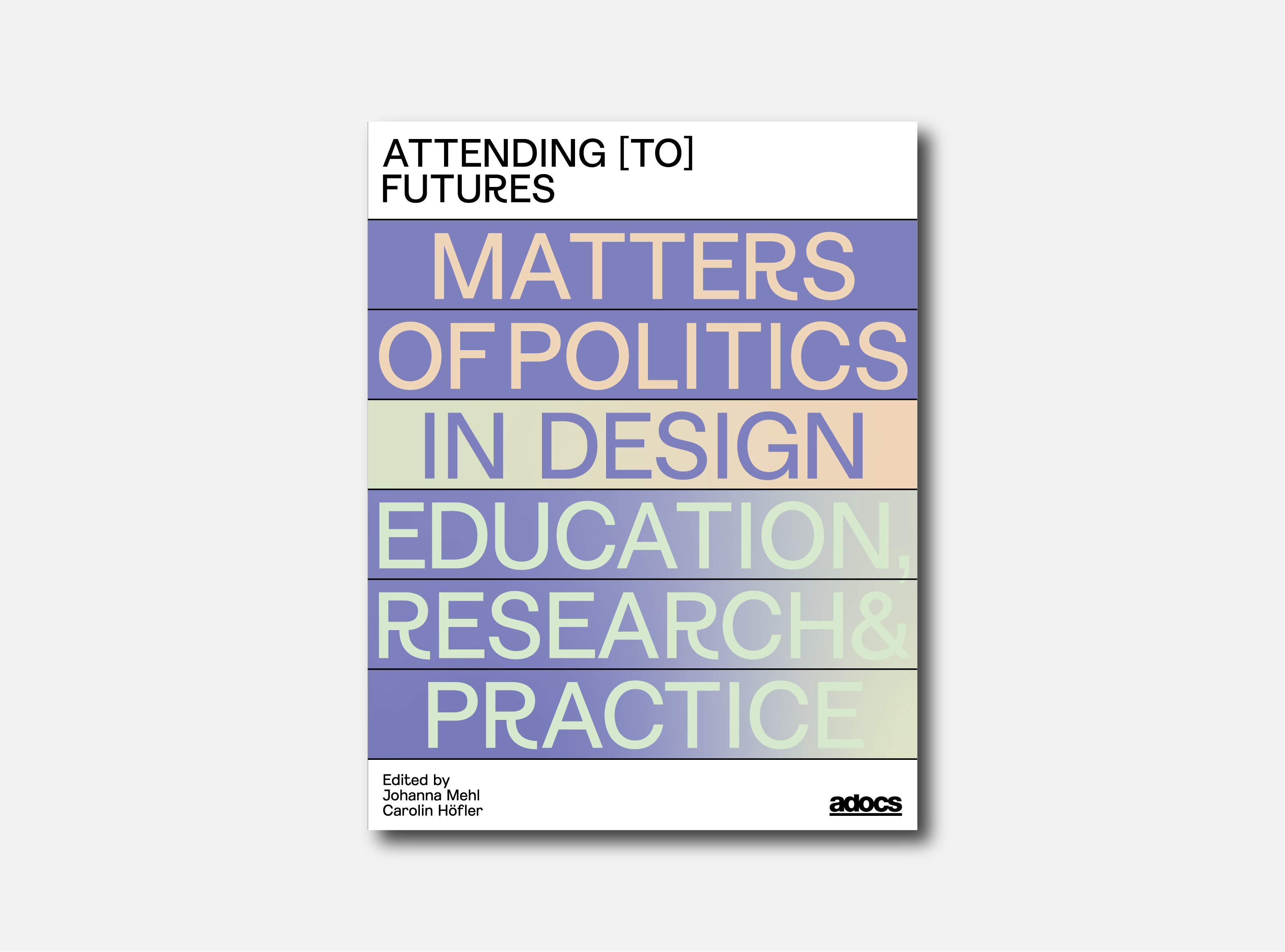
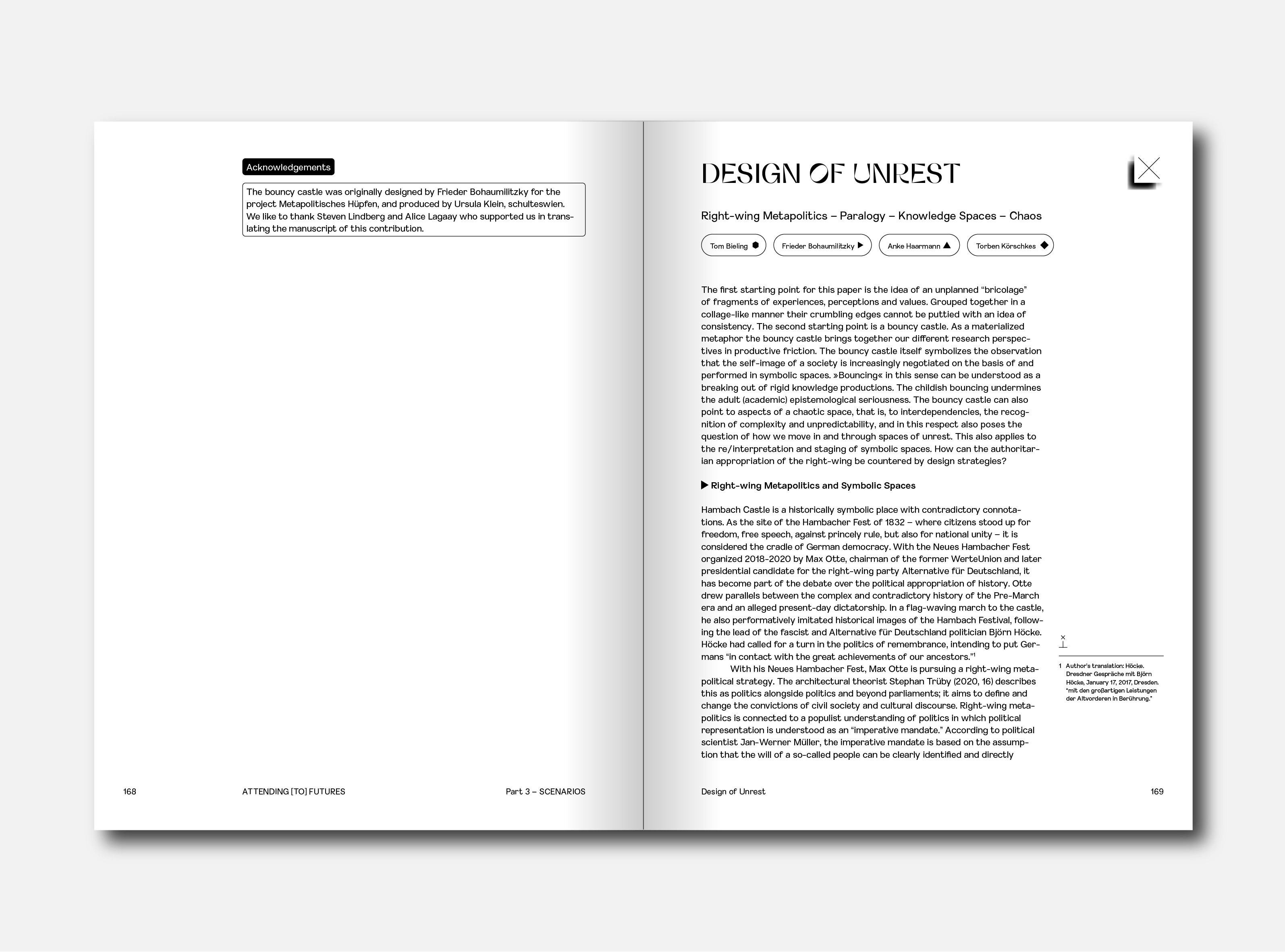
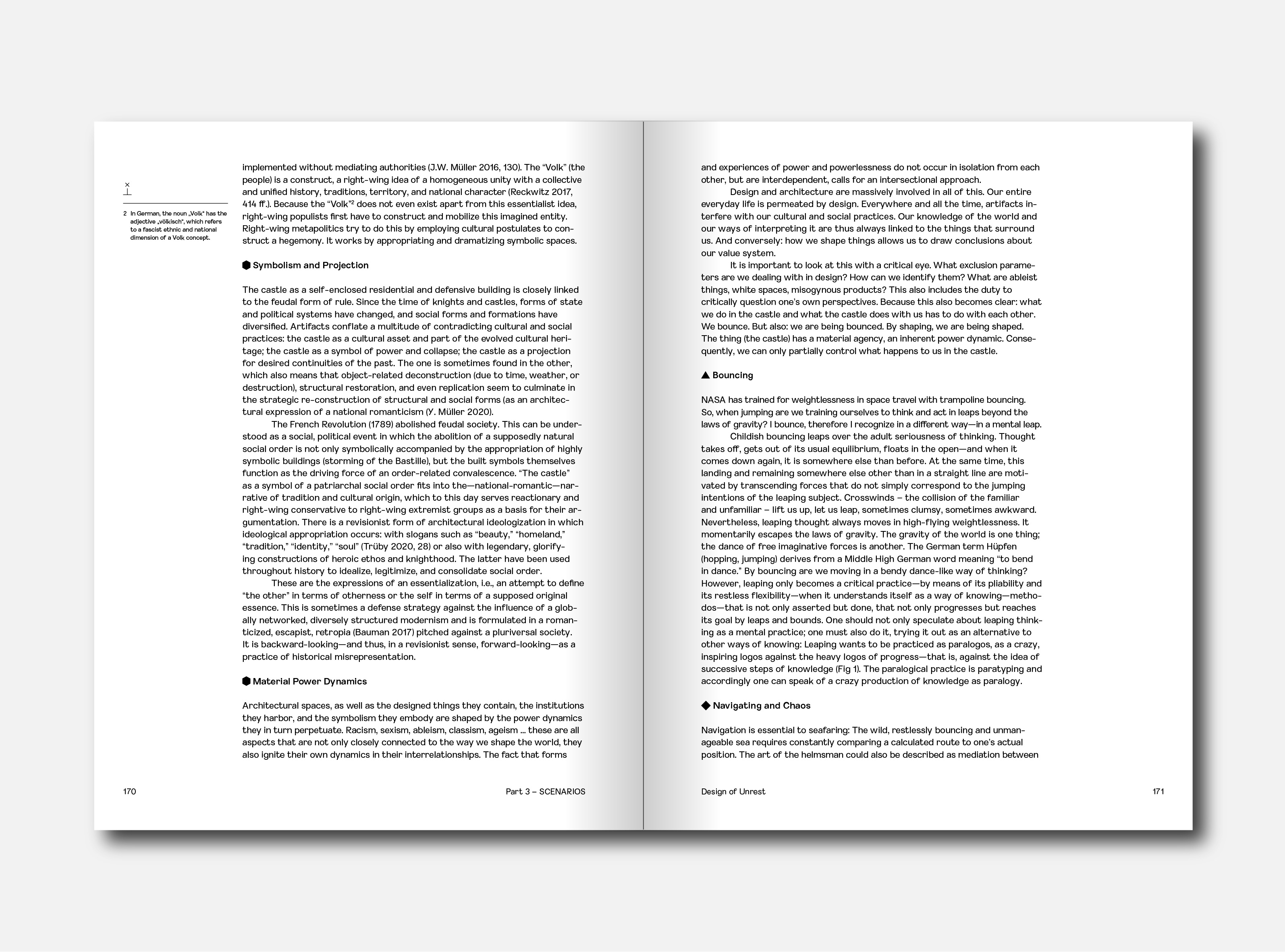
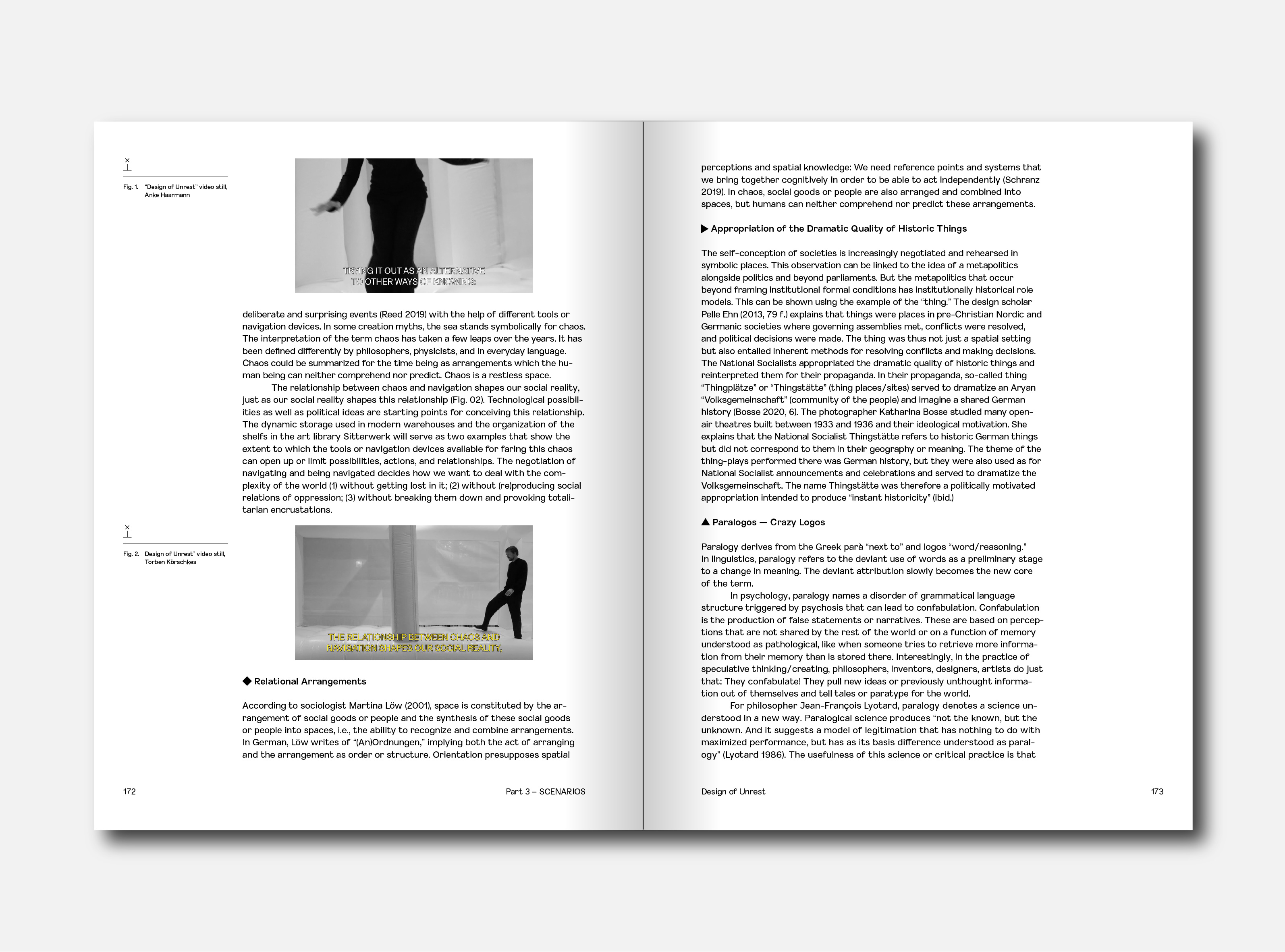
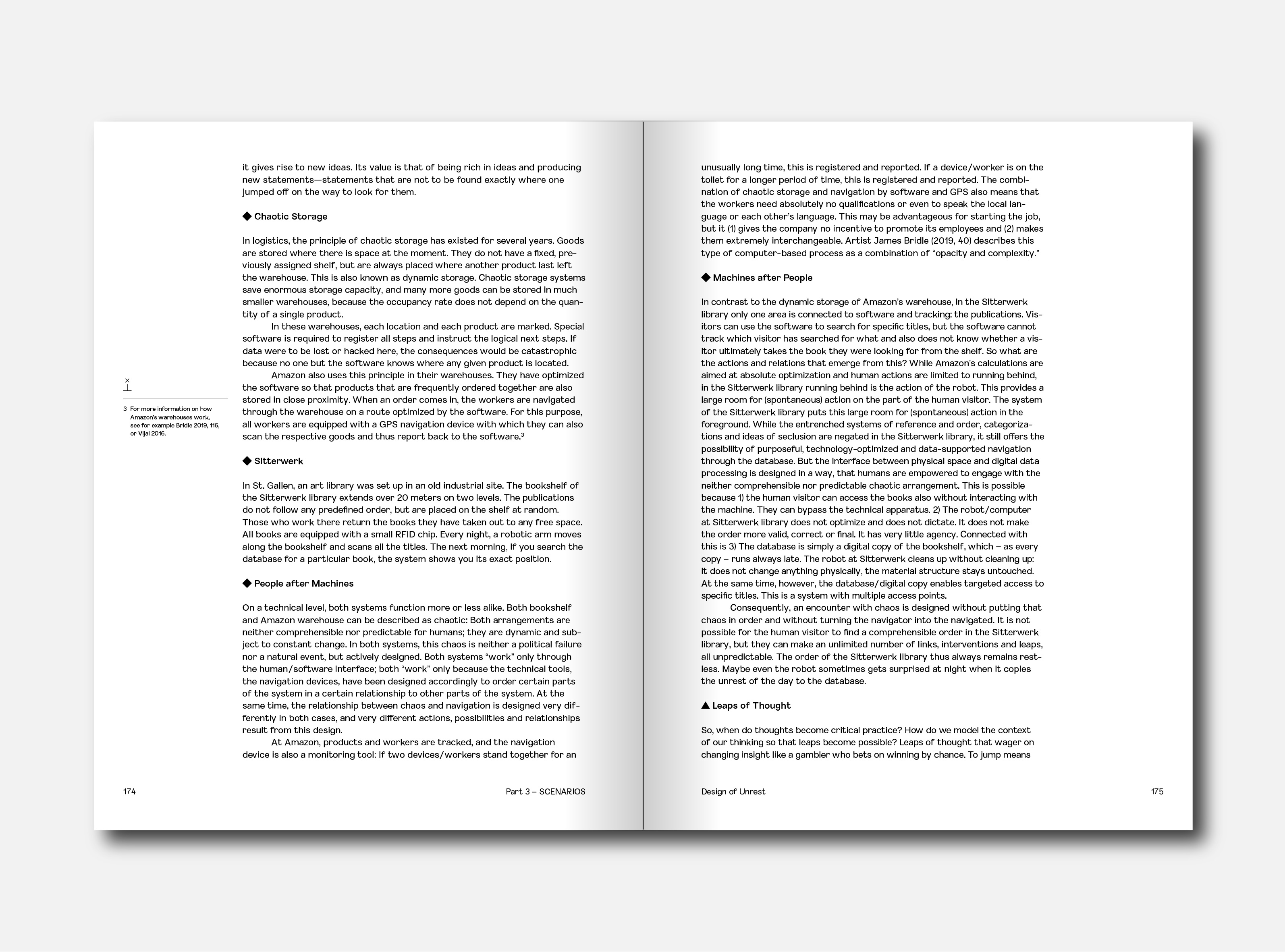
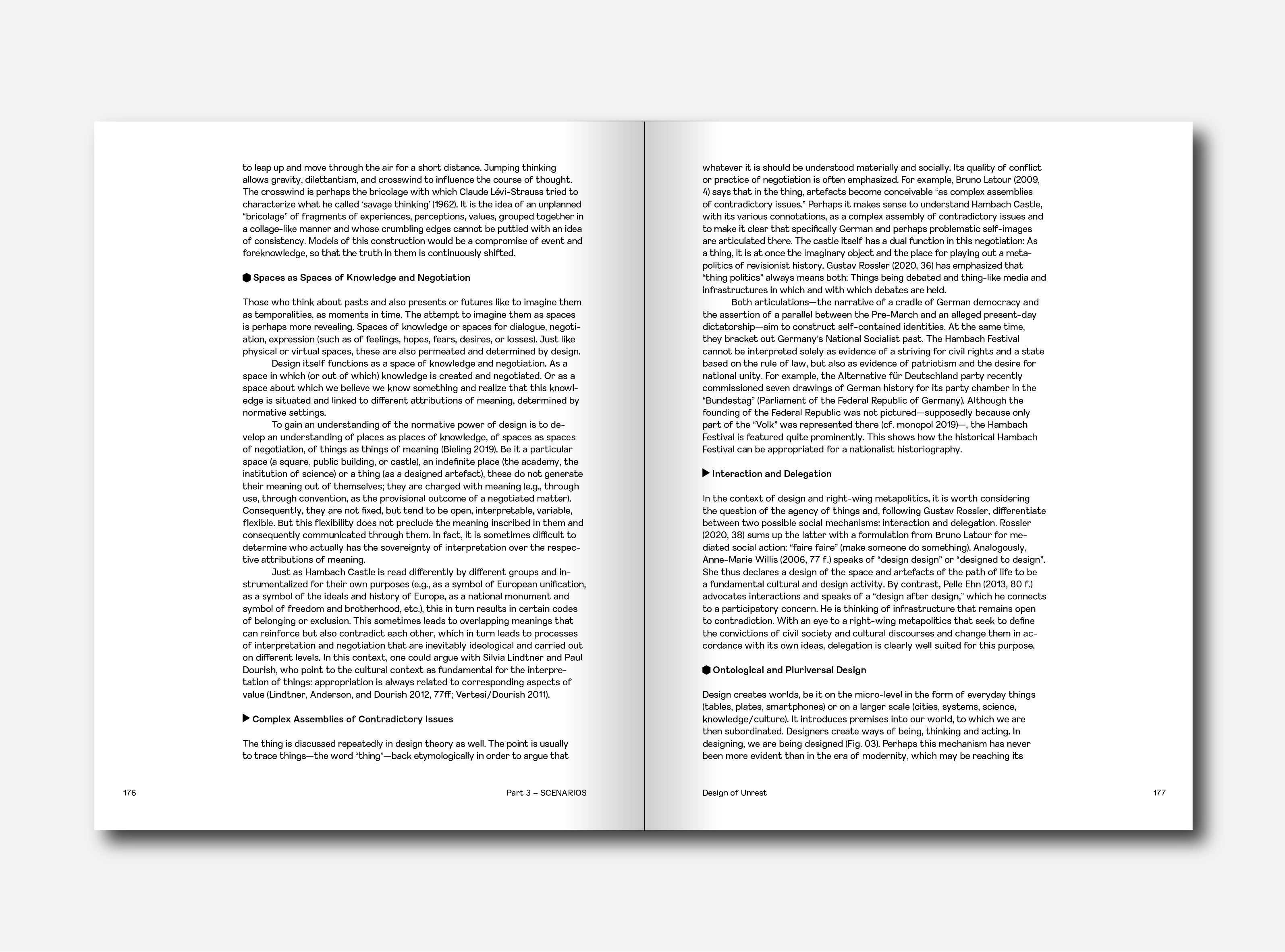


“The first starting point for this paper is the idea of an unplanned “bricolage of fragments of experiences, perceptions and values. Grouped together in a collage-like manner their crumbling edges cannot be puttied with an idea of consistency. The second starting point is a bouncy castle. As a materialized metaphor the bouncy castle brings together our different research perspec- tives in productive friction. The bouncy castle itself symbolizes the observation that the self-image of a society is increasingly negotiated on the basis of and performed in symbolic spaces. “Bouncing” in this sense can be understood as a breaking out of rigid knowledge productions. The childish bouncing undermines the adult (academic) epistemological seriousness. The bouncy castle can also point to aspects of a chaotic space, that is, to interdependencies, the recognition of complexity and unpredictability, and in this respect also poses the question of how we move in and through spaces of unrest. This also applies to the re/interpretation and staging of symbolic spaces. How can the authoritarian appropriation of the right-wing be countered by design strategies?”
Tom Bieling · Frieder Bohaumilitzky · Anke Haarmann · Torben Körschkes, “Design of Unrest. Right-wing Metapolitics – Paralogy – Knowledge Spaces – Chaos”, in: Johanna Mehl · Carolin Höfler, Attending [to] Futures. Matters of Politics in Design Education, Research, Practice, Adocs, Hamburg 2023, S. 168-181.
→ PDF (eng)
→ PDF (eng)